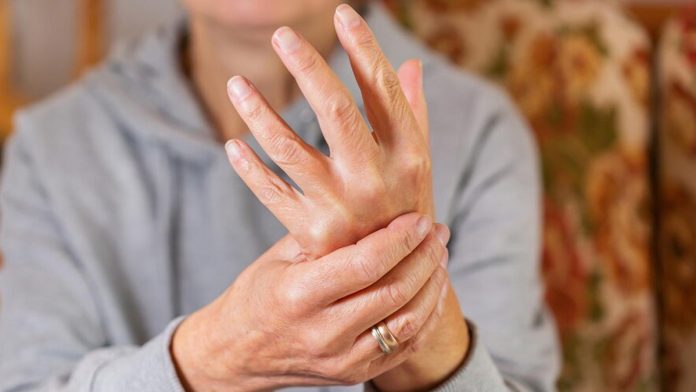Arthritis is an inflammation of the joints that may affect one joint or multiple joints. The symptoms of arthritis usually develop over time, but they may also appear suddenly.
There are more 100 different types of arthritis, with different causes and treatment methods.
Osteoarthritis (OA) is the most common type of in the United States. Other common Source include:
rheumatoid arthritis (RA)
psoriatic arthritis (PsA)
gout
The typical age for developing rheumatoid arthritis (RA) is between ages 30 and 50. It can, however, affect children, teens, and younger adults.
Osteoarthritis (OA) commonly develops after the age 50 or 60 years, but there are studies that reveal radiographic evidence of OA occurring in women in their 40s. It also tends to be more prevalent in individuals who are overweight.
What are the symptoms of arthritis?
Joint pain, stiffness, and swelling are the most common of arthritis. Your symptoms may also feel worse in the morning when you get out of bed or upon standing up after you’ve been resting.
Other symptoms of osteoarthritis include:
limited range of motion that sometimes goes away after movement
clicking or popping with bending
muscle weakness around the joint
instability or buckling of the joint
bony growths in the fingers
grating or scraping feeling in the knees
Other symptoms of rheumatoid arthritis include:
morning stiffness that can last 30 minutes or more
more than one affected joint
onset in smaller joints like feet and hands
same joints on both sides of the body are affected
fatigue
low-grade fever
inflammation of the eyes and mouth
inflammation of the heart muscle and blood vessels
low red blood cell count
What causes arthritis?
wear and tear of a joint from overuse
age (OA is most common in adults over age 50)
injuries
obesity
autoimmune disorders
genes or family history
muscle weakness
Osteoarthritis
Normal wear and tear causes OA, one of the most common forms of arthritis. An infection or injury to the joints can exacerbate this natural breakdown of cartilage tissue.
Cartilage is a firm but flexible connective tissue in your joints. It protects the joints by absorbing the pressure and shock created when you move and put stress on them. A reduction in the normal amount of this cartilage tissue causes some forms of arthritis.
Your risk of developing OA also be higher if you have a family history of the disease.
Rheumatoid arthritis
Another common form of arthritis, RA, is an autoimmune disorder. It occurs when your body’s immune system attacks the tissues of the body, resulting in inflammation to joints as well as other body organs.
In the joints, this inflammatory response affects the synovium, a soft tissue in your joints that produces a fluid that nourishes the cartilage and lubricates the joints, eventually destroying both bone and cartilage inside the joint.
The exact cause of the immune system’s attacks is unknown. But scientists have discovered genetic markers that increase your risk of developing RA fivefold.
How is arthritis diagnosed?
Seeing your primary care physician is a good first step if you’re unsure who to see for an arthritis diagnosis. They will perform a physical exam to check for fluid around the joints, warm or red joints, and document the range of motion in the joints. Your doctor can refer you to a specialist if needed.
If you’re experiencing severe symptoms, you may choose to schedule an appointment with a rheumatologist first. This may lead to a faster diagnosis and treatment.
Documenting inflammation levels in your blood and aspirating and analyzing joint fluids, if present, can help your doctor determine what kind of arthritis you have.
Blood tests that check for specific types of antibodies like anti-cyclic citrullinated peptide (CCP), rheumatoid factor (RF) and antinuclear antibody (ANA) are also common diagnostic tests.
Doctors commonly use imaging scans such as X-ray, MRI, and CT scans to produce an image of your bones and cartilage. This helps them rule out other causes of your symptoms, such as bone spurs.
How is arthritis treated?
The main goal of treatment is to reduce the amount of pain you’re experiencing and prevent additional damage to the joints. You’ll learn what works best for you in terms of managing pain.
In general, treatment for arthritis a combination of:
medications and supplements
physical therapy
occupational therapy
nutrient-rich diet
regular exercise
weight loss, if needed
heat and cold compresses
mobility assistance devices, such as canes or walkers
Analgesics, such as hydrocodone (Vicodin) or acetaminophen (Tylenol), are effective for pain management, but do not help decrease inflammation.
Nonsteroidal anti-inflammatory drugs (NSAIDs), such as ibuprofen (Advil) and salicylates, help manage pain and inflammation. Salicylates can thin the blood, so they should not be used with additional blood thinning medications.
Menthol or capsaicin creams. These creams block the transmission of pain signals from your joints.
Steroids, like prednisone, help reduce inflammation but should be used cautiously and for brief periods of time.
Immunosuppressants and biologics. Immunosuppressants and biologics are prescribed for moderate to severe inflammatory arthritis like RA.
If you have RA, your doctor may recommend corticosteroids or disease-modifying antirheumatic drugs (DMARDs), which suppress your immune system.
DMARDs and biologics are being prescribed earlier in the course of RA. Methotrexate is now a first-line drug for treatment.
Supplements
While clinical evidence and safety are lacking for many herbs and supplements marketed for arthritis, there are a few supplements that may be beneficial. For example, avocado and soybean unsaponifiables (ASU) may help OA symptoms. Fish oil and turmeric supplements may help reduce inflammation in RA.
However, you should talk with your doctor before taking any supplements for arthritis to make sure they are safe for you and will not interact with any medications you’re currently taking.
Surgery
Surgery to replace your joint with an artificial one may be an option. This form of surgery is most commonly performed to replace hips and knees.
If your arthritis is most severe in your fingers or wrists, your doctor may perform joint fusion. In this procedure, the ends of your bones are fused, eliminating the joint and therefore eliminating the site of inflammation.
Physical therapy
Physical therapy involving exercises that help strengthen the muscles around the affected joint is a core component of arthritis treatment.
Outside of your appointments, your physical therapist will likely recommend a plan of care that includes daily movement along with exercises you can complete on your own at home. Collectively, these can help build strength, flexibility, and balance to improve mobility while also preventing falls.






























